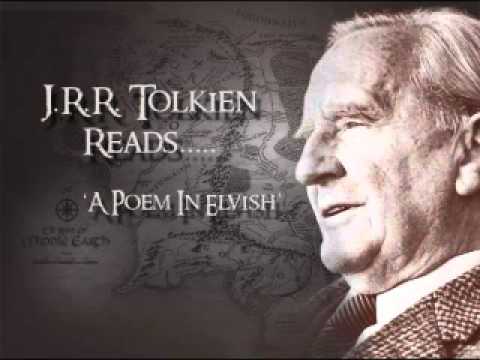J. R. R. Tolkien was undoubtedly a storyteller, but he was even more of a world-builder. One may read the Lord of the Rings novels the first time for the high adventure, but one re-reads them to continue inhabiting the painstakingly crafted alternate reality of Middle-Earth. Tolkien put serious time and effort into the diversity of not just its magic, its geography, and its inhabitants, but also of its languages. Indeed, the whole of his masterwork could fairly be said to have served his linguistic interests first and foremost: “Invention of languages is the foundation,” he once wrote. “The ‘stories’ were made rather to provide a world for the languages than the reverse.”
An Oxford philologist with a special interest in Old Norse, Tolkien had been experimenting with constructed languages since adolescence. But it was The Lord of the Rings that allowed him to engage fully in that pursuit, spurring the creation of such tongues as Adûnaic, Dwarvish, and Entish. Like anyone of his linguistic expertise, he understood that, in reality, most languages come to us not in isolation but in families, and it is the family of Elvish languages — including Quendya, Exilic Quenya, Telerin, Sindarin, and Nandorin — that represents the pinnacle of his language-construction project.
In the video at the top of the post, Tolkien himself reads aloud an Elvish-language poem. Just below, you can see him writing in Elvish script, or Tengwar, one of the seven writing systems he created for The Lord of the Rings alone. He didn’t just assemble it out of forms that looked nice to him: much as with the Elvish language itself, he made sure that it plausibly descended from more basic ancestors, and that it reflected the history, social practices, and mythology of its fictional users. But nor are Elvish or Tengwar completely free of any influence from what’s spoken and written in our own world, given that Tolkien could draw on English, Old Norse, and Latin, but also Old English, Gothic, Spanish, Italian, and Greek.
Tolkien also took a strong interest in the Finnish language. In a letter to W. H. Auden, he likened it to “a complete wine-cellar filled with bottles of an amazing wine of a kind and flavor never tasted before.” The influence of Finnish manifests in certain traits of the Elvish language of Quenya — “the absence of any consonant combinations initially, the absence of the voiced stops b, d, g (except in mb, nd, ng, ld, rd, which are favored) and the fondness for the ending -inen, -ainen, -oinen” — but one suspects that Tolkien’s broader literary sensibility was shaped more by the Kalevala, the nineteenth-century national epic that inspired him to take up the study of Finnish in the first place. How close he ever got to mastery history hasn’t recorded, but as a fellow Finnish-learner, I can attest that se ei ole helppoa.
Related content:
Map of Middle-Earth Annotated by Tolkien Found in a Copy of Lord of the Rings
Animated Video Explores the Invented Languages of Lord of the Rings, Game of Thrones & Star Trek
Based in Seoul, Colin Marshall writes and broadcasts on cities, language, and culture. His projects include the Substack newsletter Books on Cities, the book The Stateless City: a Walk through 21st-Century Los Angeles and the video series The City in Cinema. Follow him on Twitter at @colinmarshall or on Facebook.

